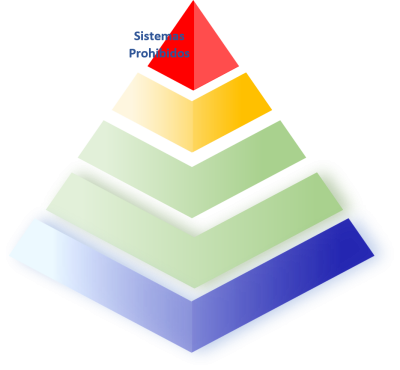
Article 5 (Chapter II) of Artificial intelligence act (EU) 2024/1689 establishes the prohibited AI practices. These are a very limited number of cases, eight in particular, which particularly affect people’s privacy and dignity and which are considered unacceptable risks at European Union level.
These prohibited practices have been in force since 2 February 2025 and are as follows:
| 1. The use of subliminal techniques or deliberately manipulative or misleading techniques, causing or being able to cause significant damage. | ||
 |
Example: The use of an AI system to mimic another person with the goal of deceiving and distorting people’s behavior, thereby affecting their ability to make informed decisions, so that they cause or reasonably can cause significant harmo. |
|
| 2. The exploitation of vulnerabilities related to age, disability, or socioeconomic circumstances to distort a person’s or group’s behavior in a manner that causes or may cause significant harm. | ||
 |
Example:An AI system that takes advantage of the vulnerabilities of older people to defraud or influence their decisions, which can worsen their mental health and cause serious psychological damage. |
|
| 3. Evaluation or classification of persons or groups based on their social behaviours or personal traits, leading to harmful or unfavourable treatment or being unjustified or disproportionate. | ||
 |
Example: A social welfare agency uses an AI system to estimate the likelihood of fraud by combining predictive models with behavioral data not related to the purpose of the assessment, such as marital status and health data, and leading to harmful or disproportionate treatment towards that person or groups of people. | |
| 4. The evaluation or prediction of the risk of a person committing a crime, based solely on the creation of profiles or personality traits, with legal exceptions. | ||
 |
Example: A police authority uses an AI system to predict the criminal behavior of crimes such as terrorism based solely on the age, nationality, address, car type and marital status of individuals. | |
| 5. The creation or expansion of databases of facial recognition through the indiscriminate extraction of the Internet or recordings of closed circuits of television (video surveillance systems). | ||
 |
Example: AI systems that create or expand facial recognition databases by indiscriminately extracting facial images from the Internet or from closed-circuit television recordings. | |
| 6. The inference of emotions of a person in the workplace or educational center, except for medical or safety reasons. | ||
 |
Example: A company uses emotion recognition systems to evaluate employee performance or to make decisions about promotions. | |
| 7. Biometric classification of people to infer sensitive data such as race, political opinions, religion, sexual orientation, etc. | ||
 |
Example: An AI system that categorizes people active on a social media platform based on their alleged sexual orientation by analyzing biometric data from photos shared on that platform and, on that basis, serves those people ads. | |
| 8. Remote biometric identification in real time in public spaces and on a massive basis, except for exceptions to ensure compliance with the law. | ||
 |
Example: A police agency installs cameras prepared for biometrics in multiple locations, including places of worship, various LGBT+ community locations, doctor’s offices, pharmacies, and various restaurants and bars. | |
The ultimate aim of all these measures is to ensure a high level of protection of citizens, health, safety and fundamental rights enshrined in the European Union’s Charter of Fundamental Rights, while minimising the harmful effects of AI.

In our News section you will find information about the most relevant events, talks and conferences in the field of artificial intelligence.

AESIA consolidates its role in Europe in promoting ethical, sustainable...

The United Nations Human Development Report recognizes the transformative potential...
We use third-party cookies for analytical purposes, in summary we only use Google Analytics cookies to analyse our traffic.